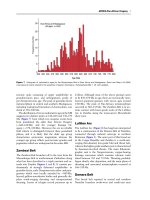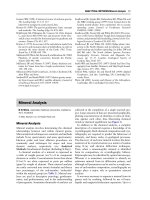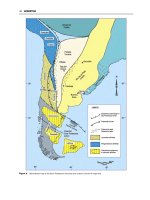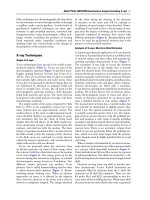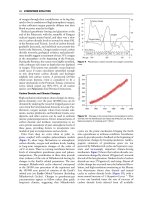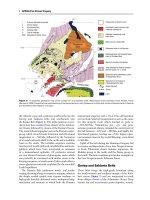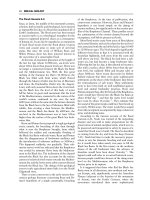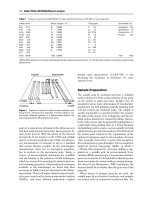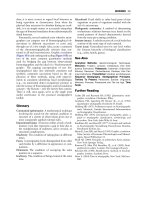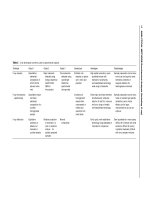Encyclopedia of geology, five volume set, volume 1 5 (encyclopedia of geology series) ( PDFDrive ) 1081
Bạn đang xem bản rút gọn của tài liệu. Xem và tải ngay bản đầy đủ của tài liệu tại đây (118.87 KB, 1 trang )
446 FOSSIL PLANTS/Gymnosperms
Figure 3 Ovule (seed) bearing cupules of the early gymno
sperm Xenotheca devonica (Upper Devonian, Devon, England).
This fern-like theme in gymnosperm evolution continued into the Carboniferous period. Much of the
fern-like foliage of coal swamp forests is actually
attributable to extinct gymnosperms. These are the
so-called ‘seed ferns’ or Pteridosperms (Figure 5). As
the name implies, these were seed-bearing plants that
possessed fern-like leaves, which is a combination of
characteristics seen only in extinct gymnosperms.
Groups common but not exclusive to the Carboniferous period include Calamopityales, Hydraspermales,
Medullosales, Lyginopteridales, and Callistophytales.
For the most part, these were understory shrubs and
small trees. Some are also known to have been vinelike climbers. The earliest gymnosperms of more
modern aspect were an extinct group of conifers
called the Voltziales (Figure 6). This group first
appeared in the Late Carboniferous and the plants
are thought to have resembled in general habit and
leaf morphology living conifers such as Araucaria
heterophylla (Norfolk Island Pine).
During the Late Palaeozoic, gymnosperms were an
important component of terrestrial floras, but there
was a significant increase in species diversity during
the Early Mesozoic. Numerous petrifactions of stem
and trunk show that most Mesozoic gymnosperms,
like their modern relatives, were woody shrubs and
trees. Evidence from fossil forests deposits reveal
landscapes dominated by gymnosperms, which
formed the main canopy element (Figure 7). In particular, the conifers underwent a major radiation
during the Triassic period. Studies of the pollen
Figure 4 Reconstruction of the early gymnosperm Elkinsia poly
morpha (Upper Devonian, USA). After Serbet and Rothwell (1992).
International Journal of Plant Sciences 153: 602 621.
record show that the living Gnetales diversified
alongside angiosperms during the mid-Cretaceous,
but then underwent a decline towards the end of
this period.
Molecular phylogenetic studies provide an alternative perspective on the fossil history of some groups of
gymnosperms. These are beginning to yield an unprecedented level of phylogenetic resolution in the most
species-rich living groups, and they are providing
additional insights into long-standing phylogenetic
conundrums. Molecular data support the hypothesis
that conifers had a single origin, clearing up a longstanding controversy over the phylogenetic position
of the Taxaceae (Yews) (Figure 8). Also, within conifers, the pines (Pinaceae) come out as sister group to
all other living species. As long suspected, the monkey
puzzle family Araucariaceae is closely related to the
Yellow-Wood family, Podocarpaceae. In addition to
